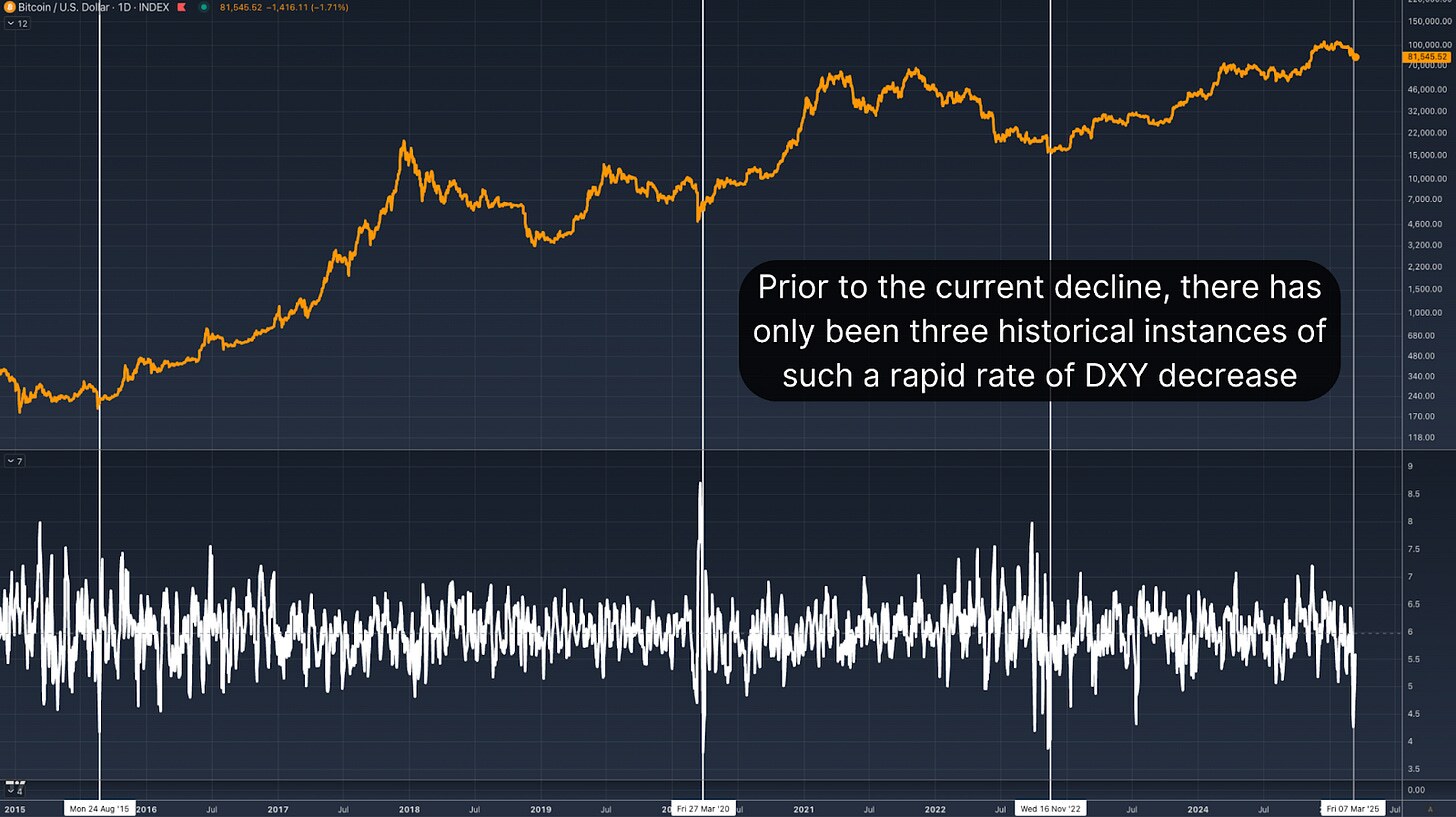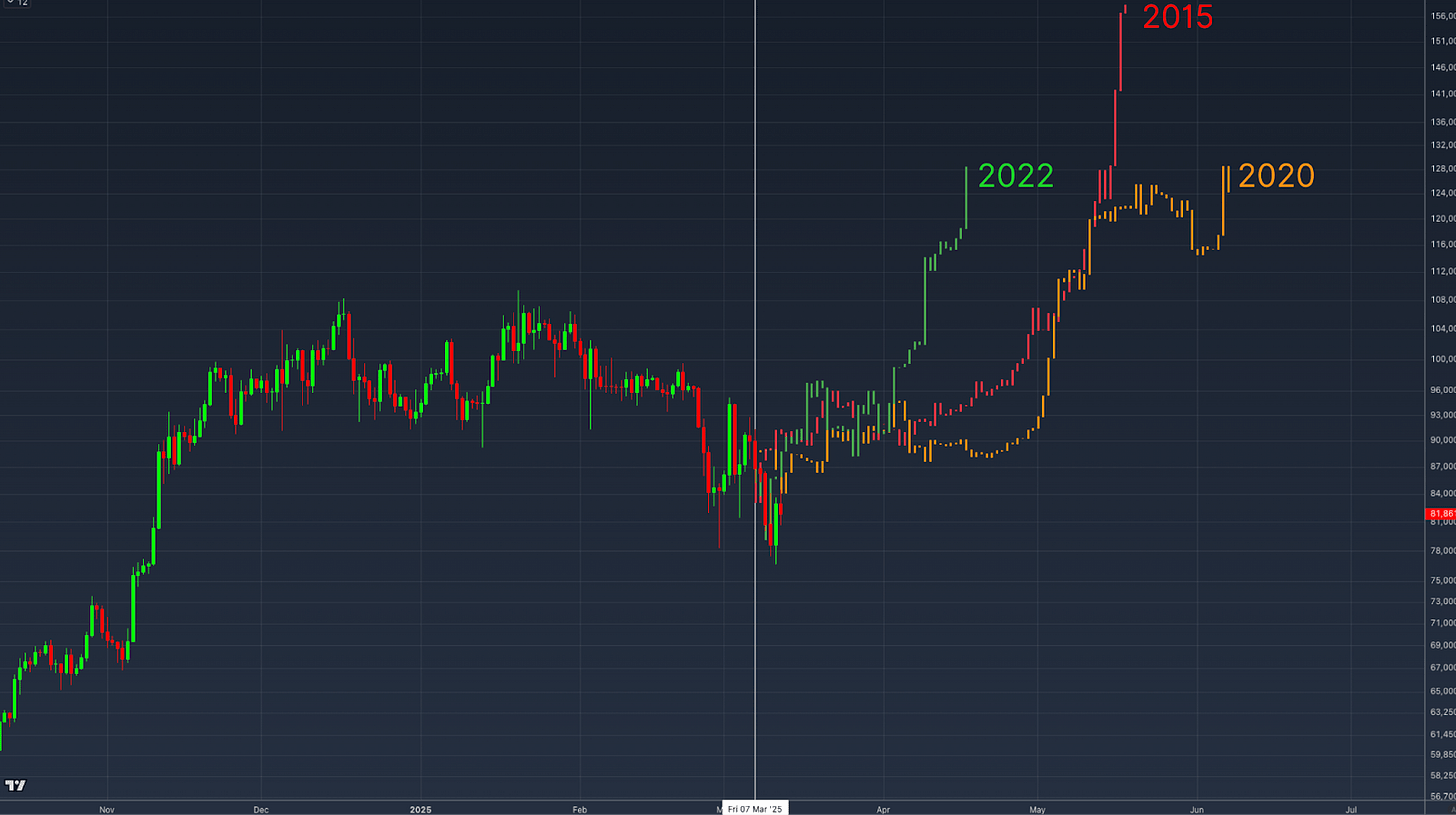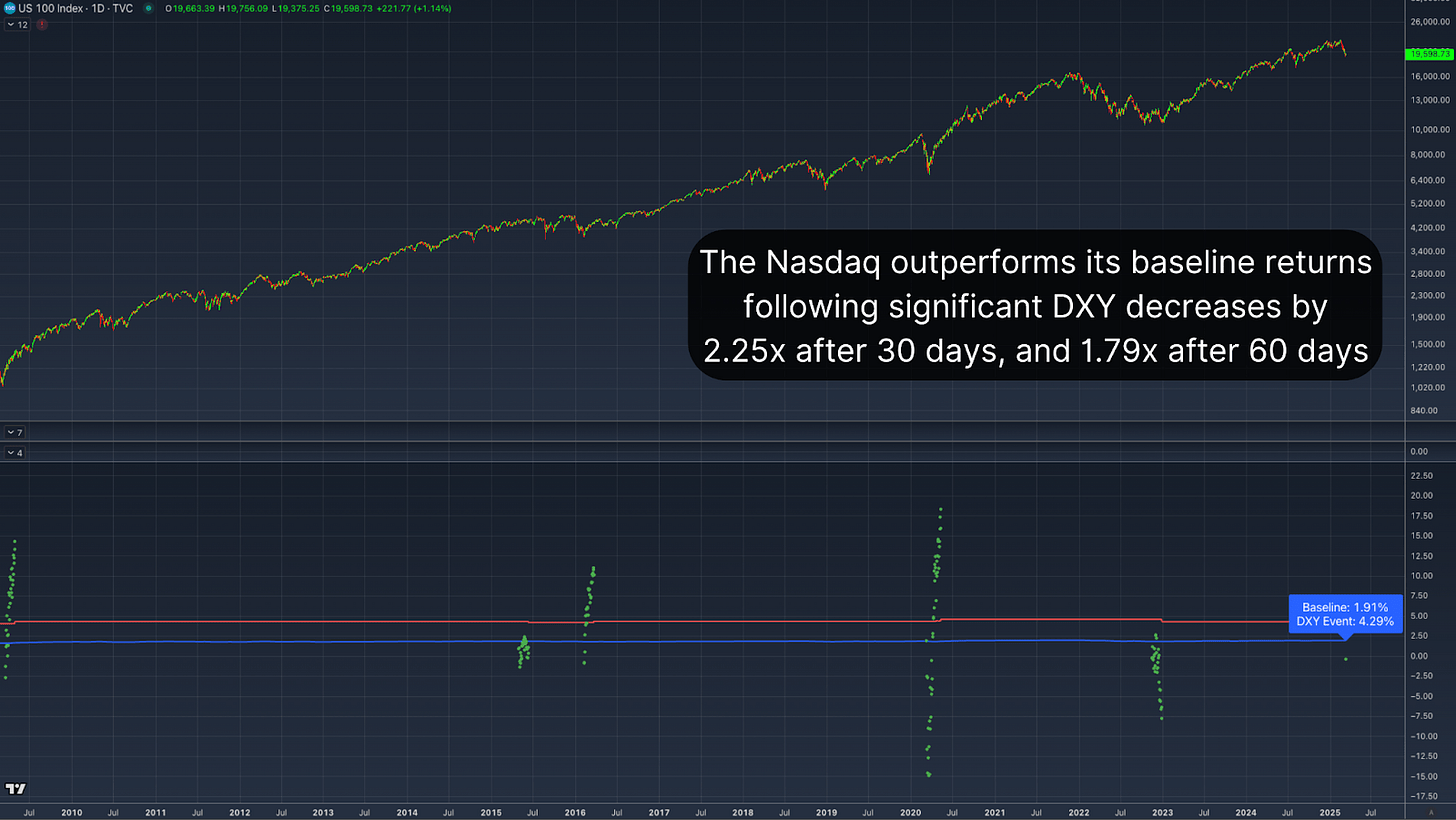Bitcoin has been fighting with lower minimums in recent weeks, leaving many investors questioning whether the asset is on the edge of an important bear cycle. However, a rare data point linked to the US dollar strength index (DXY) suggests that a significant change in market dynamics can be imminent. This Bitcoin purchase signal, which has only appeared three times in the history of BTC, could point out a bullish reversal despite the current bearish feeling.
To see this topic in depth, see a recent YouTube video here:
Bitcoin: This had only happened 3 times before
BTC vs dxy Inverse relationship
Bitcoin’s price action has been inversely correlated with the Force index in US dollars (DXY). Historically, when the DXY is strengthened, BTC tends to fight, while a DXY in Declive often creates favorable macroeconomic conditions for the appreciation of the price of Bitcoin.
Despite this historically upward influence, the price of Bitcoin has continued to retire, recently falling from more than $ 100,000 to less than $ 80,000. However, the past cases of this rare DXY setback suggest that a retoun but significant BTC rebound could still be at stake.
Bitcoin Buy Signal Historic Histors
Currently, the DXY has been in a strong decrease, a decrease of more than 3.4% in a single week, a exchange rate that has only been observed three times throughout Bitcoin’s commercial history.

To understand the potential impact of this DXY signal, let’s examine the three previous instances in which this strong decrease in the US dollar resistance index occurred:
- 2015 Post-Bear Market Bottom
The first occurrence was after the price of BTC played fund in 2015. After a period of lateral consolidation, the price of BTC experienced a significant upward increase, winning more than 200% in a few months.
The second instance occurred in early 2020, after the collapse of the acute market triggered by the COVID-19 pandemic. Similar to the 2015 case, BTC initially experienced an chopped price action before a rapid ascending trend arose, which culminated in a several months rally.
- 2022 Bee market recovery
The most recent instance occurred at the end of the 2022 bears market. After an initial price stabilization period, BTC continued with a sustained recovery, rising at substantially higher prices and starting the current bull cycle in the following months.
In each case, the strong decrease in the DXY was followed by a consolidation phase before BTC embarked on a significant upward career. Superposition of the price action of these three instances in our current price action, we have an idea of how things could develop in the near future.

Variable rental markets Correlation
Interestingly, this pattern is not limited to Bitcoin. A similar relationship can be observed in traditional markets, particularly in the Nasdaq and the S&P 500. When the DXY returns to abruptly go back, capital markets have historically exceeded their reference yields.

The average yield of 30 days of all time for NASDAQ after a similar DXY decrease is 4.29%, well above the 30 -day standard yield of 1.91%. Extending the 60 -day window, Nasdaq’s average yield increases to almost 7%, almost doubleing the typical 3.88%yield. This correlation suggests that Bitcoin’s yield after an acute DXY setback is aligned with wider market historical trends, reinforcing the argument of a delayed but inevitable positive response.
Conclusion
The current decrease in the US dollar index in US dollars represents a rare and historically bartering Bitcoin purchase signal. Although BTC’s immediate price action is still weak, historical precedents suggest that a period of consolidation will probably be followed by a significant manifestation. Especially when it is reinforced by observing the same response in indexes such as Nasdaq and S&P 500, the broader macroeconomic environment is being favorably configured for BTC.
Explore live data, graphics, indicators and in -depth research to stay in front of Bitcoin’s price action in Bitcoin Pro Magazine.
Discharge of responsibility: This article is only for informative purposes and financial advice should not be considered. Always do your own research before making investment decisions.




